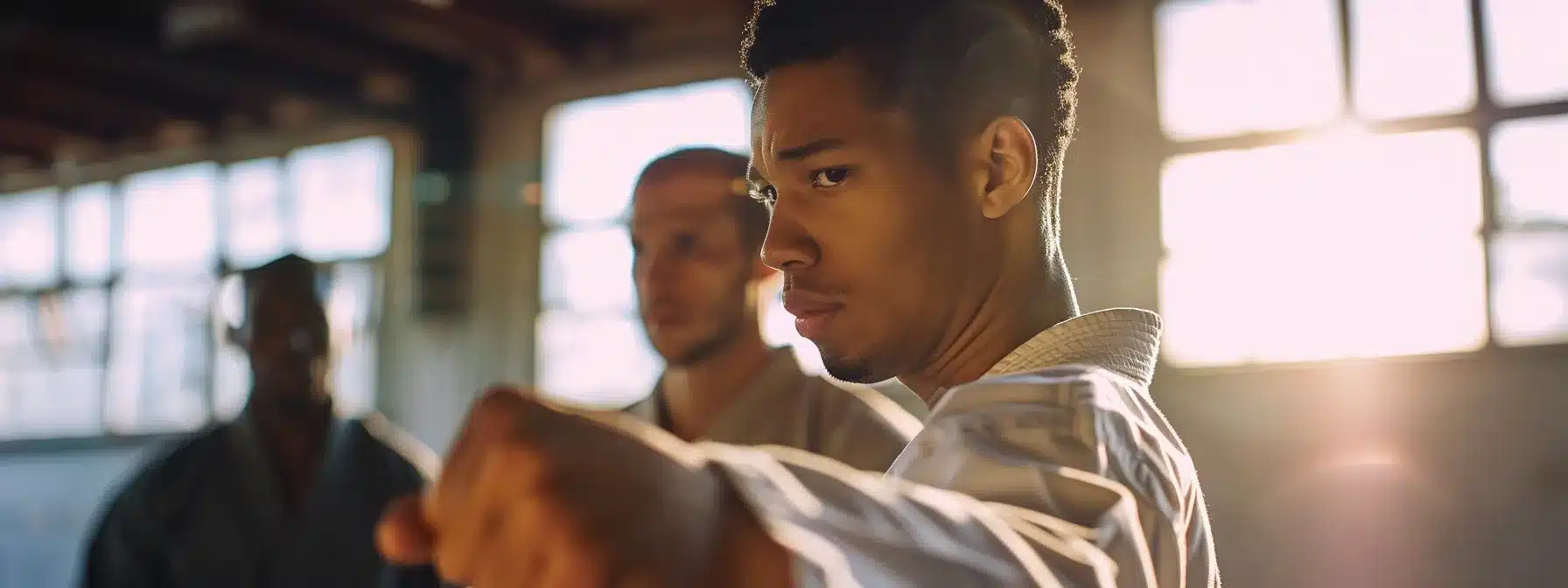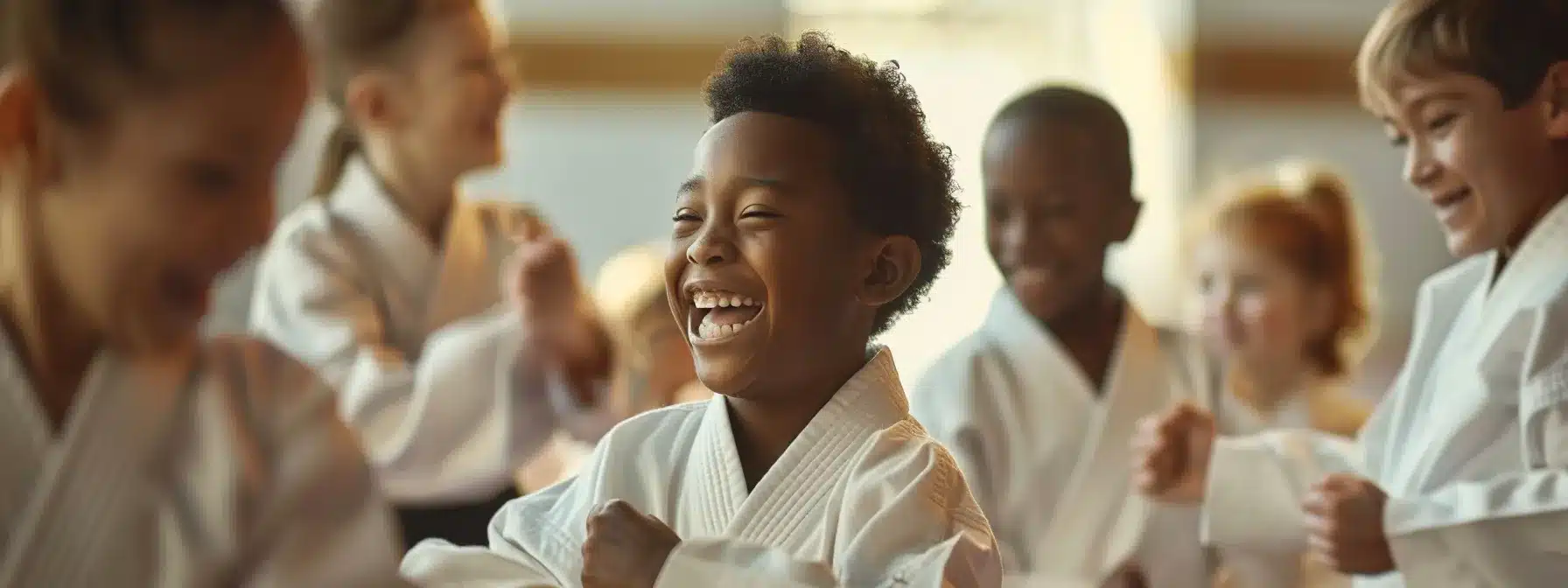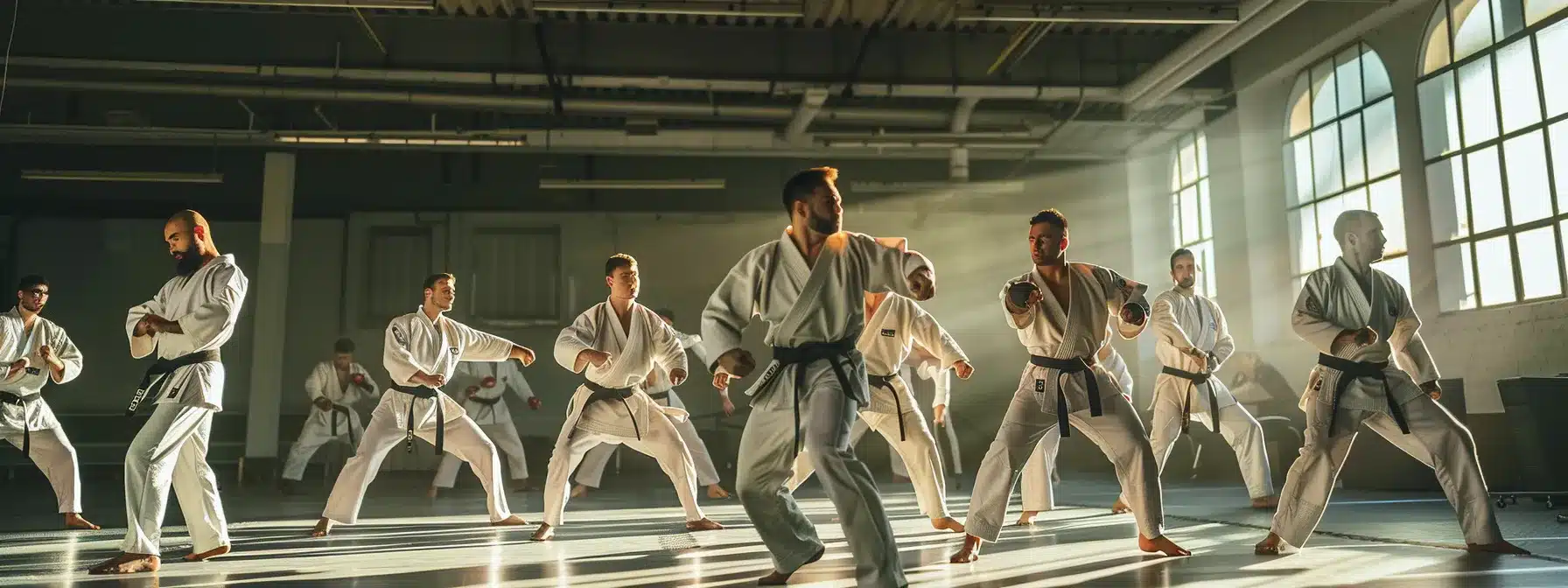Are you seeing more empty mats at your martial arts school than you’d prefer? High turnover can be both financially draining and a threat to maintaining a vibrant school community. This article will explore key strategies to improve martial arts school retention, such as implementing effective teaching methods and fostering a supportive community. It will also cover the importance of feedback in enhancing the student experience—an essential factor for schools looking to retain students from childhood through adulthood. By continuing to read, you’ll discover how to boost your school’s appeal to both new and current students, driving growth and reducing turnover.
Key Takeaways
- Martial arts school retention is crucial for both growth and financial stability.
- Personalized coaching and progress tracking enhance student satisfaction and loyalty.
- Active engagement and support through community building boost long-term commitment.
- Regular feedback and prompt responses from schools improve the student experience and retention.
- Continuous analysis of martial arts school retention metrics allows schools to adapt and thrive.
Understanding the Importance of Martial Arts School Retention

Keeping students engaged and enrolled is key to the growth and success of a martial arts school. The link between student satisfaction and their continued attendance is undeniable. When students feel safe, noticed, and supported in their training, they’re much more likely to stay. It’s important to recognize the hurdles that might lead to a student’s decision to leave and to address these issues proactively. This section delves into how retention directly affects school prosperity, explores the critical role of student contentment in fostering loyalty, and identifies the common obstacles to maintaining enrollment figures.
How Retention Influences Your School’s Growth and Success
Student retention is the cornerstone of a thriving martial arts school. When students continue their education, it speaks volumes about the value and quality of the training provided. For instance, schools focused on martial arts see higher engagement levels when personalized interventions are utilized to support students’ unique needs. Moreover, retaining students can mean greater financial stability and opportunities for employment within the school’s community.
The Connection Between Student Satisfaction and Ongoing Enrollment
At the heart of a martial arts school, student satisfaction is a strong predictor of ongoing enrollment and a school’s health. When students are happy with their progress and the attention they receive from instructors and facility management, they are more likely to continue their education. Schools must utilize modern tools such as computers and software to track all aspects of student development, ensuring that no detail in their health and progress goes unnoticed.
These measures not only address the immediate needs of learners but also instill a sense of belonging and trust that encourages continued attendance.
Recognizing Challenges That Lead to Student Dropout
Identifying the reasons for student withdrawal is crucial for martial arts schools looking to improve their retention rates. Factors such as a lack of alignment between the school’s curriculum and students’ interest in physical education, insufficient leadership support, and unclear student orientation processes can greatly impact a learner’s decision to stay. In addition, if students feel that the school environment does not acknowledge or adhere to the best practices in law and safety, their trust diminishes, leading to higher dropout rates. By understanding and addressing these challenges, schools can create a more inviting and supportive atmosphere that underpins student retention:
Identifying Factors That Affect Student Retention Rates

Understanding what keeps students enrolled is essential for martial arts schools aiming to boost growth through improved retention. Assessing the quality of instruction and curriculum, closely looking at the overall student experience, and detecting early signs of disengagement are all key areas. Each component significantly impacts the numbers on retention statistics, shaping whether a student stays or leaves. Taken together, these elements paint a picture of the school’s effectiveness, from a teacher’s guidance to social promotion. This section will examine these critical factors that help schools maintain and even increase enrollment.
Assessing the Overall Student Experience
In martial arts education, assessing the overall student experience encompasses more than just training. These elements significantly contribute to the environment that sustains student enrollment and overall satisfaction with the school’s offerings. A school that aligns its policy decisions with the best interests of its students and community sets the stage for lasting growth and success.
Creating an exceptional student experience begins with understanding and meeting the unique needs of each learner: by doing so, schools can guide them toward a rewarding educational journey. Here is a brief outline of strategies to enhance the student experience:
- Establish a mentorship program to build community and support.
- Manage business operations precisely, ensuring resources are in place for student success.
- Keep transparent accounting practices that support trust and investment from students and their families.
These practices demonstrate to students that the school is committed to their personal and martial arts development, securing a firm foundation for long-term retention.
Detecting Early Signs of Disengagement
Spotting early signs of disengagement in students is a vital step in preventing them from dropping out of martial arts training. A noticeable drop in motivation, less participation in class, or missing sessions can be indicators that a student is losing interest. By keeping track of such changes and providing timely support, schools can address problems before they lead to a student leaving. This involves actively seeking information on student well-being and learning progress, which can be achieved through regular communication and feedback mechanisms.
By taking early action, martial arts schools can maintain a thriving learning environment that encourages continuous student development and discourages students from leaving prematurely. Detecting these signs not only helps retain students but also refines teaching strategies that benefit the entire college community.
Implementing Effective Teaching Strategies to Enhance Retention

Effective teaching is essential to ensuring martial arts schools flourish. Personalizing coaching to each student’s needs can significantly impact their mental health and academic success in higher education. Establishing clear progress goals helps manage and provide students and parents with measurable improvement data. Additionally, creating engaging lessons promotes consistent participation, keeping students eager to learn. These strategies together forge a path to robust student retention and school growth.
Personalizing Coaching to Address Individual Needs
To directly boost student retention, martial arts instructors adopt personalized coaching approaches. They harness tools like student dashboards that track progress and integrate social media to create a community language that resonates with the trainees. By tapping into insights gained from research on individual learning styles, schools can tailor their coaching methods, ensuring each student’s experience is attuned to their personal journey, solidifying their commitment to the martial arts school.
Establishing Clear Progress Goals for Students
Setting clear student progress goals is a vital component of effective retention policies for martial arts schools. By outlining specific objectives, educators provide a roadmap to empower students and keep them focused on their martial arts journey. Clear goals give students a sense of achievement and, through strategic marketing, can also shine a light on the school’s commitment to individual progress, thus attracting and retaining more students.
Creating these goals involves collaboration and careful planning:
- Engage students in setting personal milestones that align with their unique strengths and interests.
- Enlist the support of parents and guardians to reinforce these goals outside of the school environment.
- Integrate progress goals into the school’s overall marketing and communication, showcasing the commitment to student development.
By crafting a supportive learning path, schools reinforce their retention efforts while contributing to each student’s sense of purpose and belonging within the martial arts community.
Encouraging Consistent Participation Through Engaging Lessons
Engaging lessons powered by technology can significantly boost students’ martial arts experience, inspiring consistent participation. When schools introduce tech-enhanced training tools, such as virtual reality simulations for technique practice or apps that track fitness progress, students often find novelty and interactivity irresistible. This approach not only captures their interest but also deepens their understanding and enhances their overall martial arts journey, leading to higher retention rates for the school.
Building a Strong Community to Foster Student Loyalty

Building a strong community is a powerful strategy for martial arts schools looking to improve student retention and drive growth. By facilitating social connections among students, involving families in school activities, and promoting an inclusive and supportive atmosphere, schools create an environment where loyalty flourishes. Each of these approaches, detailed in the following sections, plays a critical role in keeping students engaged and committed to their martial arts journey.
Facilitating Social Connections Among Students
Establishing social connections among students in martial arts schools is vital for fostering a sense of community that directly corresponds to higher retention rates. When students form friendships and support networks within the school, they look forward to attending classes not only for the physical and mental benefits but for social interaction as well. Schools can create this bond by organizing events and team-building activities, encouraging collaboration and camaraderie among their students.
To facilitate these social ties, schools might consider:
- Hosting regular social events, such as post-class gatherings or martial arts movie nights, to help students interact in a relaxed setting.
- Creating buddy systems that pair new students with more experienced ones, ensuring newcomers feel welcomed and connected from the start.
- Implementing group projects or team practices where students can work together, forging bonds that extend beyond the martial arts mats.
Involving Families in School Activities
Martial arts schools that actively involve students’ families in activities often see a positive impact on student retention. By inviting families to observe classes, participate in school events, and even partake in family-focused martial arts programs, schools create a supportive environment that extends beyond their walls. Such involvement reinforces the value of martial arts education, helps forge lasting bonds, and underlines the school’s commitment to its students and their families.
Here are practical ways to engage families within the school community:
- Hold special family class days where parents can train with their children.
- Organize school-wide events like picnics or tournaments where families can celebrate achievements together.
- Offer informational sessions on martial arts and its benefits, tailored to help family members understand and appreciate the discipline.
Promoting an Inclusive and Supportive Atmosphere
An inclusive and supportive atmosphere is essential for martial arts schools aiming to retain students and facilitate growth. By cultivating a culture that welcomes diversity and encourages mutual respect, schools witness increased loyalty from students who feel valued regardless of their background or skill level. This respectful environment helps students to thrive as they engage more deeply with their training and form stronger connections with their peers, solidifying the school’s community fabric.
Utilizing Feedback to Improve Student Experience

Gathering insights through regular surveys can illuminate areas for improvement and elevate the student experience at martial arts schools. When schools respond promptly to student concerns, they demonstrate a commitment to student satisfaction. By making targeted improvements based on feedback, schools can fine-tune their operations and curriculums, creating an environment where students thrive, and retention rates rise.
Gathering Insights Through Regular Surveys
Regular surveys can be a goldmine of insights for martial arts schools seeking to enhance student retention. They allow the school to collect valuable feedback directly from their students, shedding light on how the instruction, facilities, and overall environment are perceived. When this feedback is acted upon, students notice and appreciate these changes, leading to greater loyalty and a stronger community bond, ultimately contributing to the school’s growth and success.
Responding Promptly to Student Concerns
When martial arts schools respond quickly to student concerns, they foster trust and show a genuine dedication to their learners’ needs. This swift action can be the difference between a student staying and leaving, and it’s a critical factor in driving a school’s growth. For instance, if a student points out they’re struggling with a certain technique, prompt response with additional guidance or resources can result in not only improved skills but also increased engagement and satisfaction. This evident commitment to addressing student feedback not only boosts retention but also serves as a positive talking point, contributing to the school’s reputation for attentive and supportive education.
Making Improvements Based on Feedback Received
Martial arts schools that prioritize making improvements based on feedback often witness a notable increase in student retention. For example, a school might refine its scheduling system after students need more flexible class times, resulting in a more accommodating environment. Such responsiveness not only improves the student experience but also enhances the school’s image as an adaptable and student-focused institution.
Implementing changes based on student and parent feedback is a clear path toward developing a school that meets the evolving needs of its community. The steps include:
- Assessing survey responses and pinpointing key areas for enhancement.
- Developing an action plan involving faculty and staff to ensure effective changes.
- Communicating the updates back to the students and parents, demonstrating the value placed on their input.
Monitoring and Measuring Retention for Sustainable Growth

To secure the sustainable growth of a martial arts school, one must carefully monitor and measure student retention. This involves tracking essential retention metrics to understand where the school stands. Analyzing these data points helps to identify areas in need of improvement. With continuous refining of strategies based on performance analysis, martial arts schools can ensure that retention efforts are effective and targeted, setting the stage for a thriving educational environment.
Tracking Essential Retention Metrics
Tracking essential metrics like student engagement and attendance helps improve martial arts school retention. By regularly reviewing the rate at which students renew their memberships, attendance records, and progression through the curriculum, school leaders gain actionable insights. These quantitative measures, when analyzed correctly, can guide interventions aimed at keeping students engaged and enrolled, ultimately driving the school’s growth.
Analyzing Data to Identify Improvement Areas
Analyzing retention data is a practical move for martial arts schools seeking areas ripe for improvement. This analysis should go beyond surface statistics to scrutinize patterns in attendance, payment continuance, and student progression. When schools spot trends, like a specific belt level, where students tend to drop out, they can tailor interventions to those critical points. Practical changes, such as adjusting training methods or increasing motivational support, can transform these insights into positive outcomes, paving the way for sustained school growth.
Consider organizing the findings into an easily readable format to make this analysis actionable. For example, after identifying key points where students disengage:
With this table, martial arts school leaders can clearly see the links between students’ behavioral patterns and focused solutions. This approach leads to informed decisions that heighten student retention and encourage consistent growth of the school.
Refining Strategies Based on Performance Analysis
Refining strategies based on performance analysis is about evolving with the needs of your martial arts students. By assessing class attendance trends and student progression, schools can identify which teaching techniques are flourishing and which need revamping. This tailored approach ensures that the school remains dynamic and responsive, directly addressing the needs of the students and reinforcing their decision to continue their martial arts journey, ultimately leading to sustainable growth for the institution.
Conclusion
Boosting student retention is crucial for the growth of martial arts schools, as it fosters financial stability and a strong community reputation. Personalized coaching, an engaging curriculum, and a supportive community enhance student satisfaction and loyalty, keeping them enrolled. Responding promptly to feedback and refining teaching strategies based on student needs are key to creating an environment where learners thrive. By focusing on these strategies, your school can significantly improve martial arts school retention and foster long-term success.


